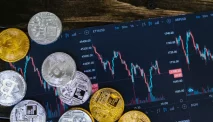Diksia.com - Cryptocurrencies have been a topic of immense interest and speculation in recent years.
With their promise of decentralized finance and potential for substantial returns, they have captivated the attention of investors and enthusiasts alike.
However, the crypto market is notorious for its volatility, and occasional downturns are an inherent part of its nature.
Lately, the market has experienced a notable decline, leaving many wondering why the crypto crash has occurred.
In this article, we delve into the factors influencing this recent downturn, shedding light on market dynamics, regulatory concerns, and investor sentiment.
Market Dynamics: Understanding the Volatility
The crypto market is highly susceptible to fluctuations due to various market dynamics. One crucial aspect is the speculative nature of cryptocurrencies.
Unlike traditional assets, cryptocurrencies lack a tangible underlying value, making their prices primarily driven by investor sentiment and market speculation.
This inherent volatility can trigger abrupt price swings, leading to significant gains or losses within short periods.
Additionally, the interconnectedness of cryptocurrencies plays a role. Bitcoin, being the largest and most influential cryptocurrency, often sets the tone for the entire market.
When Bitcoin experiences a decline, it tends to have a domino effect on other cryptocurrencies, causing a widespread market downturn.
Regulatory Concerns: Impact on Investor Confidence
Regulatory actions and concerns have a profound impact on the crypto market.
Governments and regulatory bodies worldwide have been grappling with how to manage cryptocurrencies effectively, given their decentralized nature and potential for illicit activities.
This has led to increased scrutiny, potential regulations, and policy changes, which can significantly affect investor confidence.
In recent months, various regulatory actions have emerged. Some countries have proposed or implemented stricter regulations, imposing limitations on crypto exchanges, banning certain activities, or increasing tax obligations.
Regulatory uncertainty and the fear of potential restrictions create a sense of unease among investors, leading to a decline in market demand.






